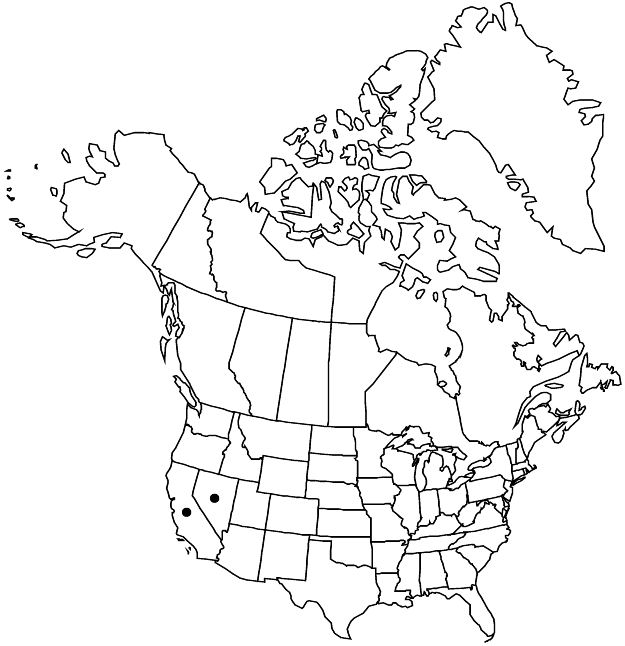Marah fabacea
Leafl. Bot. Observ. Crit. 2: 36. 1910.
Leaf-blades shallowly 5–7-lobed, 5–10 cm wide, surfaces not glaucous. Flowers: sepals (pistillate) vestigial; petals 3–5 mm (pistillate) or 1.5–2.5 mm (staminate), corolla yellowish green to cream-yellow or (especially inland) white, rotate; staminodia absent in pistillate flowers. Capsules yellowish green at maturity, globose, 4–5 cm, surface sparsely to densely echinate, spinules rigid or flexible, 4–12 mm. Seeds 1–4, oblong-ovate, ± compressed, 15–20 mm. 2n = 32.
Phenology: Flowering Feb–May.
Habitat: Streamsides, washes, coastal strand, rock outcrops, cliff bases, ledges, grasslands, chaparral, oak woodlands, riparian woodlands, open hillsides, roadsides, powerline cuts
Elevation: 20–1400 m
Distribution

Calif., Nev.
Discussion
Marah fabacea var. fabacea was mapped by K. M. Stocking (1955b) as confined to near-coastal localities centering around San Francisco Bay, from Marin to Monterey counties; he recognized var. agrestis as the more widely distributed expression of the species. In his view, var. fabacea is characterized by fruits with longer (6–12 mm) and rigid spinules and by seeds more numerous (usually four) and commonly laterally flattened. R. A. Schlising (1993) noted that var. agrestis intergrades more or less completely with plants identifiable as var. fabacea and did not recognize varieties.
Selected References
None.
Lower Taxa
No values specified.